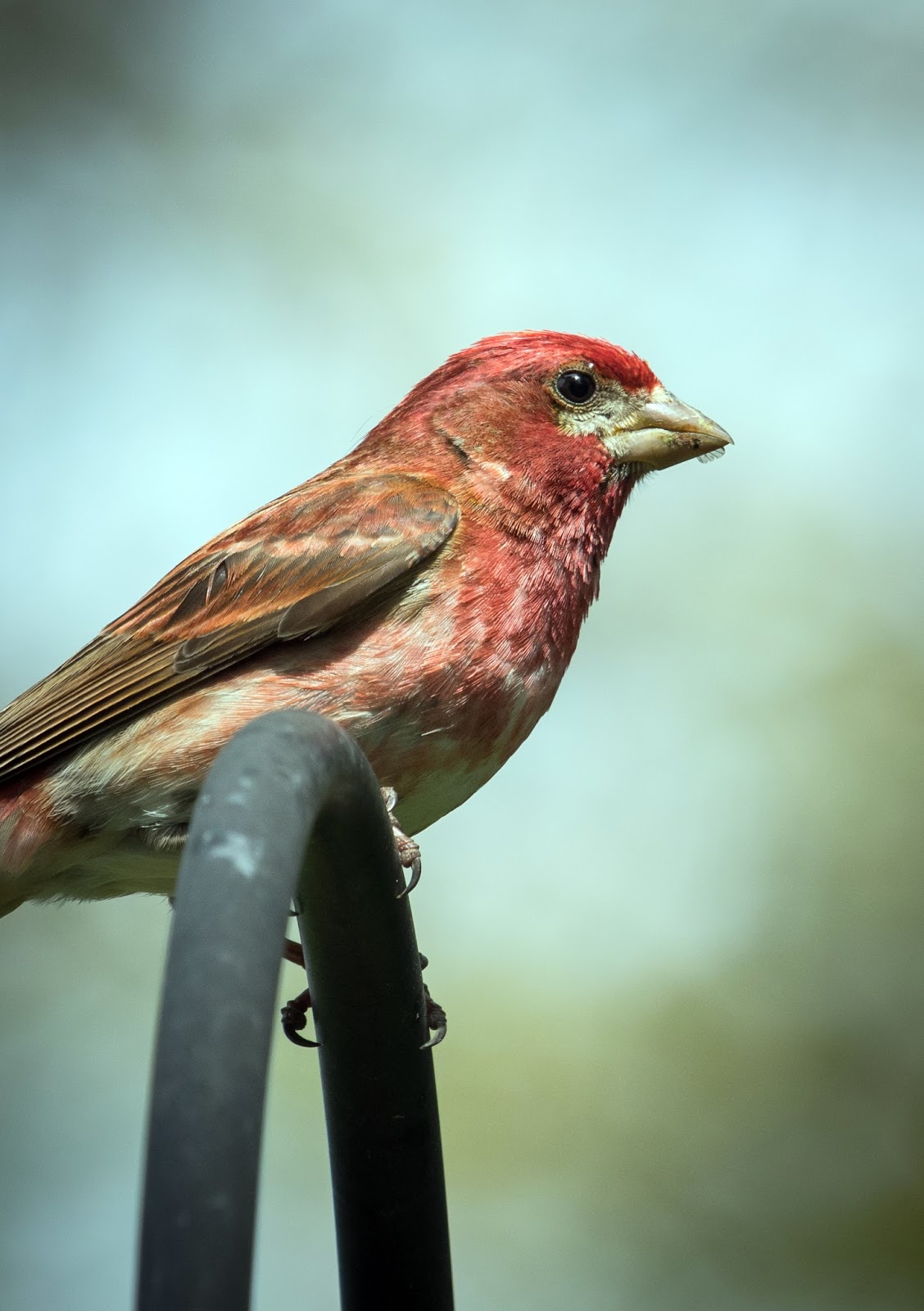

It feeds on flowers by crushing the base to get nectar. Purple Finch feeds on outer branches, and sometimes on the ground, but often it gleans insects into foliage. This migratory rose red (not purple) finch is fairly common throughout much of the northeast, Canadian provinces, and much of the Pacific coast. Purple finch erects its head feathers and opens its mouth, and one of two birds goes away to another part of the tree. Purple Finch feeds in flocks, but if they are quite friendly during their flight or sitting after food, when they are feeding, we can see some unequivocal marks of displeasure if one comes near another. It winters in the eastern half of United States, and along the Pacific coast. Purple finches are relatively small birds, measuring about 6 inches tall, with a robust body, a long tail, and the same conical bill for which many finch species are known. The Purple Finch is one of the several winter finches that birders eagerly wait in anticipation to arrive in fall. Purple Finch breeds across southern Canada and north-eastern United States.

It breeds in cool conifer forests, and it winters where food is available. Purple Finch lives in conifer or mixed woodland edges, suburban areas, parks and orchards. It is a rich musical warbling, often ending with a descending trill. The Purple Finches, were usually seen singing from the tops of trees, sometimes out in an open area, or deep in oak forest.
PURPLE FINCH SERIES
Song is a series of warbling, sometimes with some mimicry of other birds. In general, Purple finches have long warbling calls, whereas House finches are chirpier. The purple finch (Haemorhous purpureus) is a bird in the finch family, Fringillidae. Purple Finch’s calls include a musical “churlee”. It will need two years for getting the adult plumage.


 0 kommentar(er)
0 kommentar(er)
